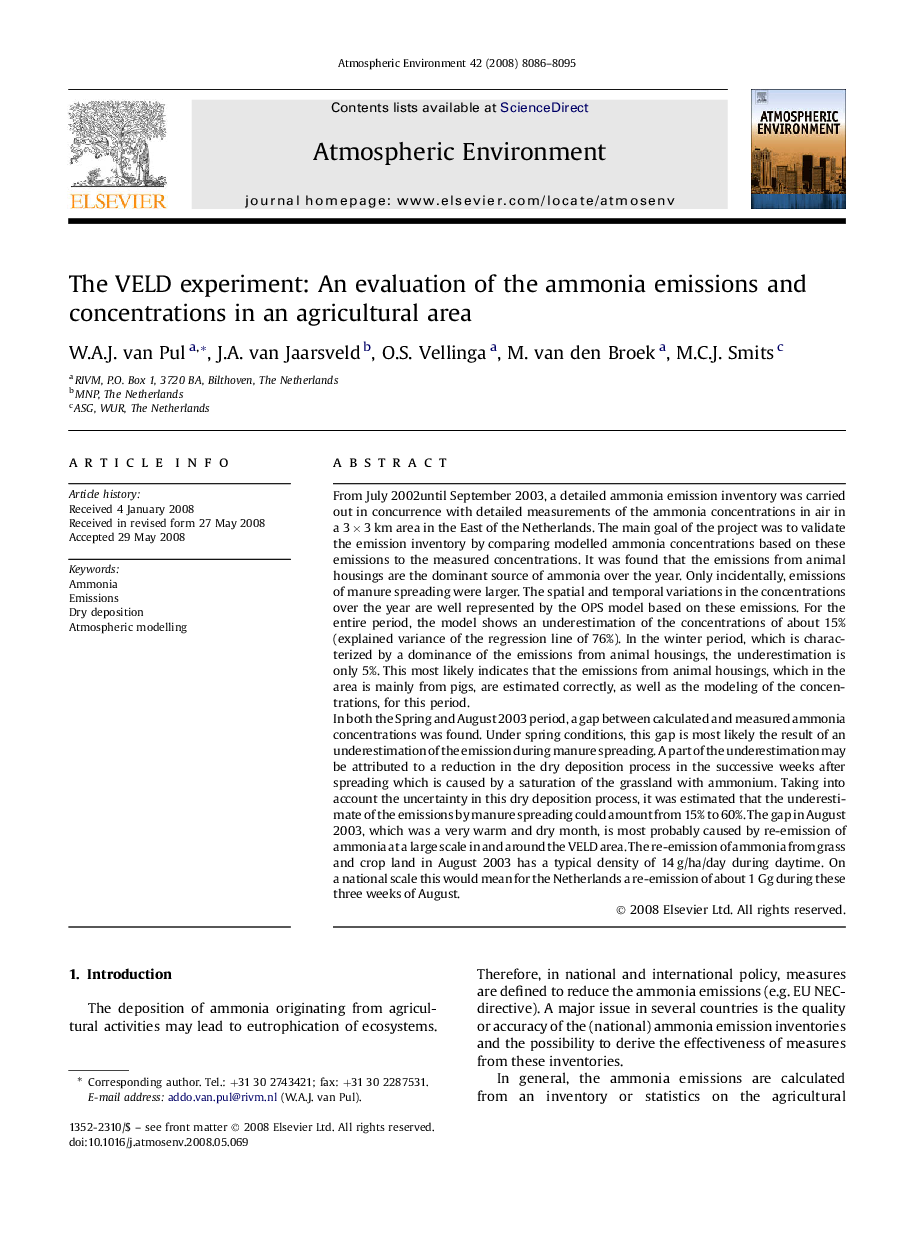| کد مقاله | کد نشریه | سال انتشار | مقاله انگلیسی | نسخه تمام متن |
|---|---|---|---|---|
| 4441517 | 1311110 | 2008 | 10 صفحه PDF | دانلود رایگان |

From July 2002until September 2003, a detailed ammonia emission inventory was carried out in concurrence with detailed measurements of the ammonia concentrations in air in a 3 × 3 km area in the East of the Netherlands. The main goal of the project was to validate the emission inventory by comparing modelled ammonia concentrations based on these emissions to the measured concentrations. It was found that the emissions from animal housings are the dominant source of ammonia over the year. Only incidentally, emissions of manure spreading were larger. The spatial and temporal variations in the concentrations over the year are well represented by the OPS model based on these emissions. For the entire period, the model shows an underestimation of the concentrations of about 15% (explained variance of the regression line of 76%). In the winter period, which is characterized by a dominance of the emissions from animal housings, the underestimation is only 5%. This most likely indicates that the emissions from animal housings, which in the area is mainly from pigs, are estimated correctly, as well as the modeling of the concentrations, for this period.In both the Spring and August 2003 period, a gap between calculated and measured ammonia concentrations was found. Under spring conditions, this gap is most likely the result of an underestimation of the emission during manure spreading. A part of the underestimation may be attributed to a reduction in the dry deposition process in the successive weeks after spreading which is caused by a saturation of the grassland with ammonium. Taking into account the uncertainty in this dry deposition process, it was estimated that the underestimate of the emissions by manure spreading could amount from 15% to 60%. The gap in August 2003, which was a very warm and dry month, is most probably caused by re-emission of ammonia at a large scale in and around the VELD area. The re-emission of ammonia from grass and crop land in August 2003 has a typical density of 14 g/ha/day during daytime. On a national scale this would mean for the Netherlands a re-emission of about 1 Gg during these three weeks of August.
Journal: Atmospheric Environment - Volume 42, Issue 34, November 2008, Pages 8086–8095